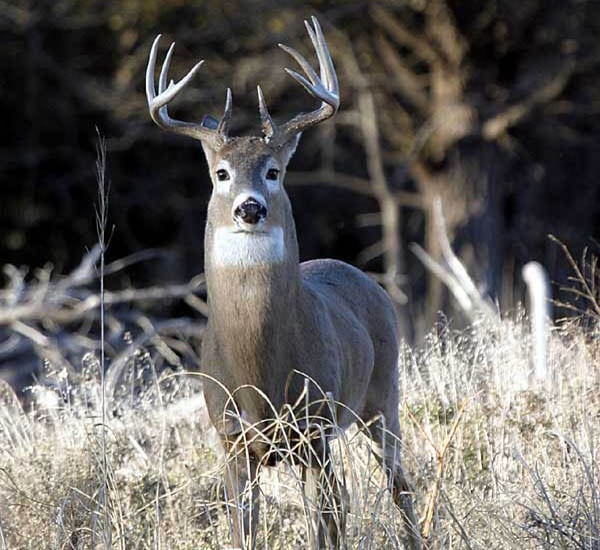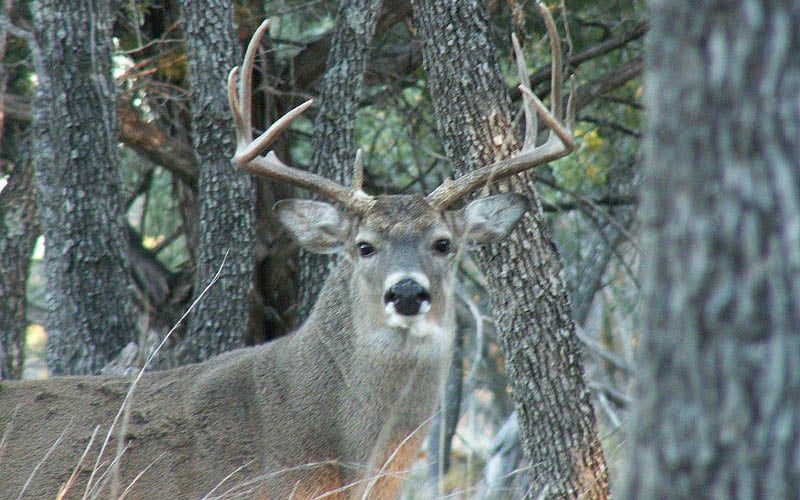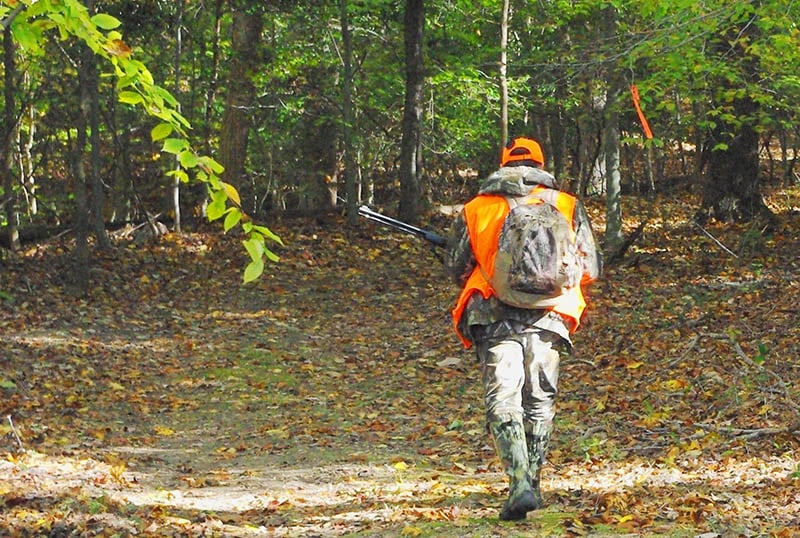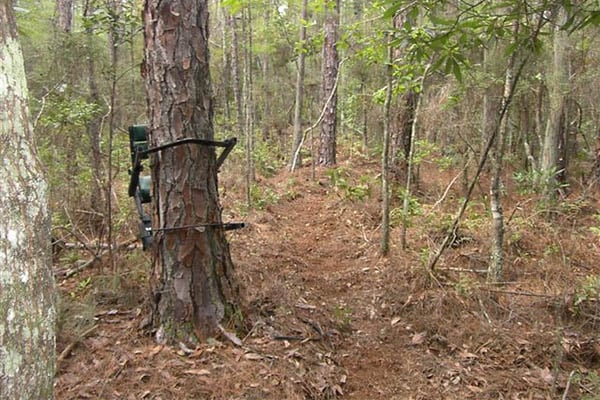
Last Updated on
There are many factors that go into tree stand placement, and you need to have all these details mastered before the season begins. It all begins with scouting. You should know the area you’re going to hunt fairly well. Take note of major feeding sources, water sources, thick timber for bedding, deer trails and buck scrapes and rubs. All these areas will begin to give you a picture of how deer move in the area. Once you have this intel gathered, you can pick out a few choice areas to put your stand locations. From there, you can scout each area in more detail and find the right tree for the job at each location.
Note that much of this early scouting should be done well ahead of the season. If you’re reading this article right before the coming season, you’ll want to take note of your hunting area this year and start planning for next year instead of scrambling to get it all done a week or two before the season begins. Unless you’re planning on hunting on the fly with your climbing stand, hammering spikes into a tree a week before the season will likely spook nearby bucks and reduce your chances for the coming season. This all said, let’s move on to more detailed tips on where to place your stand.
Establish Several Stand Locations
First thing is first, picking one stand location and hunting it exclusively all throughout the season isn’t the best strategy. Sure, you might get lucky and hunt your one stand the first morning and bag a buck right away, but you won’t always be this lucky. It’s better to diversify your options and pick several sites for stand placement. Of course you’ll want to make sure you’re placing stands far enough away from other hunters in your party as well as hunters on nearby land. We can break these stand locations down further into two distinctions:
Morning And Evening Stands
Most bucks feed after dark and bed down during the middle of the day. This is why most deer hunters hunt the mornings and evenings and take the middle of the day off to get lunch and rest. The fact is that most deer don’t move during the middle of the day, and this makes sense if you think about it. Deer are skiddish and the middle of the day is when they are most likely to be spotted. So plan your stand placement around this behavior and establish morning and evening stands. A morning stand should be devoted to catching deer on their way back from feeding as they search for an area to bed down. Head back to a prominent food source and then try to determine where the deer are traveling to and from that source. Then locate some nearby thick bedding areas and try to position yourself between the two.
If you can find a natural funnel that leads to the bedding area from the food source, set up around there and try to catch deer as they travel back from feeding in the morning. You can sometimes tell if a “travel area” is being used by looking for fresh deer rubs, but rubs are not always a dead giveaway. It is just important to establish logical pathways between the two destinations. Deer are, to a certain extent, inclined to use the path of least resistance, but older bucks will stay clear of large paths or frequently traveled sections like ATV trails, so don’t set up on either of those and expect much buck traffic. Also avoid getting too close to either the bedding area or food source as you’ll likely alert the nearby deer as you get into your stand.

An evening stand will reverse the morning pattern as deer begin to leave their bedding areas and move back towards the food sources as the sun sets. In this case you can hunt near the food source as it should not be occupied as you get to your stand in the afternoon. Hunting closer to the food source will also allow for the maximum hunting time to spot a buck on the way to feed before the sun sets.
Take Note Of The Wind
In either morning or evening hunting, the location of the wind is extremely important to your success. For example, if the path of travel for deer in the morning is downwind from your stand (i.e. the wind is at your back and blows your scent directly towards the area you’re trying to hunt), then the deer are likely to catch your scent and avoid that trail before you ever get a good look at them. This is where having several locations is key. Once you arrive to hunt early in the morning, you can quickly determine the direction of the wind and make an educated decision on which stand to hunt.

Have Access Routes Picked Out
Once you establish your stand locations, you’ll want to plot out good access routes to those stands. Once again, accessing your stand through a probable bedding or feeding area isn’t wise. Even traveling around the edge of a feeding area isn’t a good idea in the early morning. The deer may still spot you while they feed and take off in the other direction. Instead you’ll want to develop an easy path that you can travel in the dark without getting lost. In many circumstances, a dirt road or ATV trail is a good place to begin your route. The deer already know that it is a frequented path, and you’re less likely to spook a big buck while traveling it. Take these major thoroughfares until you get close to your stand, and then take a straight shot the rest of the way. It’s important to move quietly and to avoid snapping branches or rustling nearby brush. Give yourself plenty of time before the sun rises. You’ll want to be well settled in your stand before first light.

Picking Out The Right Tree
Choosing the right tree will depend on what you have to work with in the area. Large, mature trees are the best option. Needless to say, if the tree looks like it’s about to fall down, best to pass on it. They should be easy to climb, and if they are not, develop an easy route up the tree with screw in steps, spikes, or a ladder. You’ll want to get as high as you can in the tree to increase your odds of deer not noticing you, but don’t go too high as to sacrifice your safety. Practice climbing in and out of the tree to get the hang of the best route, and remember you’ll be carrying a decent amount of gear when hunting.
You should feel relatively concealed up in the tree, but you’ll want enough open patches or “shooting lanes” for when deer pass by, especially towards the spot or path you’ll focus your hunt on. However you don’t want to be wide open up in the tree, so look for trees with some remaining foliage. The classic Y shape in a tree is where a lot of hunters like to put their stands, and these spots can offer stability and a good level of concealment. Finally don’t forget that if you’re using a climbing stand, you’ll need the majority of the trunk to be free from big branches so you can easily climb it with your stand. Those concerned about climbing the tree may also want to invest in a deer hunting specific climbing harness.

Final Thoughts
Deer hunting is a process, and many hunters love the challenge of adapting and rethinking their approach and stand locations year after year. Each season you should take note of how the deer are moving and apart your approach to it. This may mean moving your stands or hunting entirely different areas of your hunting land. Whatever you do, be safe out there and good luck this season.
Image one, two, three and four and thumb courtesy of Wikimedia Commons.




Leave a Reply